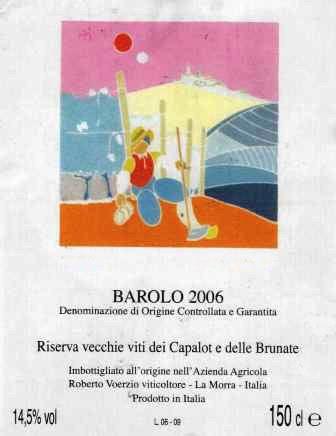2006 Barolo Nebbiolo
Roberto Voerzio Riserva Vecchie Viti Capalot E Delle Bru is a stunning Nebbiolo from the renowned Barolo region, showcasing a deep, vibrant red hue that captivates the eye. The wine presents a captivating bouquet of red fruits and floral notes, harmoniously intertwined with earthy undertones and hints of spice. On the palate, it reveals a full-bodied structure with high acidity that beautifully enhances its complexity, allowing for a mouthwatering experience with every sip. The tannins are notably firm yet refined, contributing to the wine’s age-worthiness and graceful evolution over time. This dry wine, with its prominent fruit intensity, offers a delightful balance that makes it a perfect companion for rich dishes or an indulgent evening on its own.
Roberto Voerzio Riserva Vecchie Viti Capalot E Delle Bru is a stunning Nebbiolo from the renowned Barolo region, showcasing a deep, vibrant red hue that captivates the eye. The wine presents a captivating bouquet of red fruits and floral notes, harmoniously intertwined with earthy undertones and hints of spice. On the palate, it reveals a full-bodied structure with high acidity that beautifully enhances its complexity, allowing for a mouthwatering experience with every sip. The tannins are notably firm yet refined, contributing to the wine’s age-worthiness and graceful evolution over time. This dry wine, with its prominent fruit intensity, offers a delightful balance that makes it a perfect companion for rich dishes or an indulgent evening on its own.




